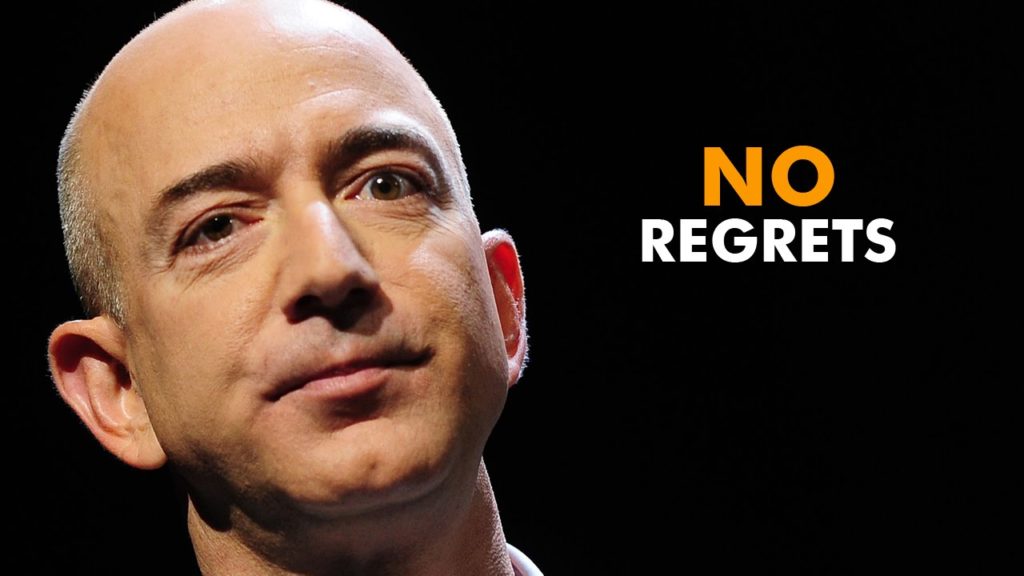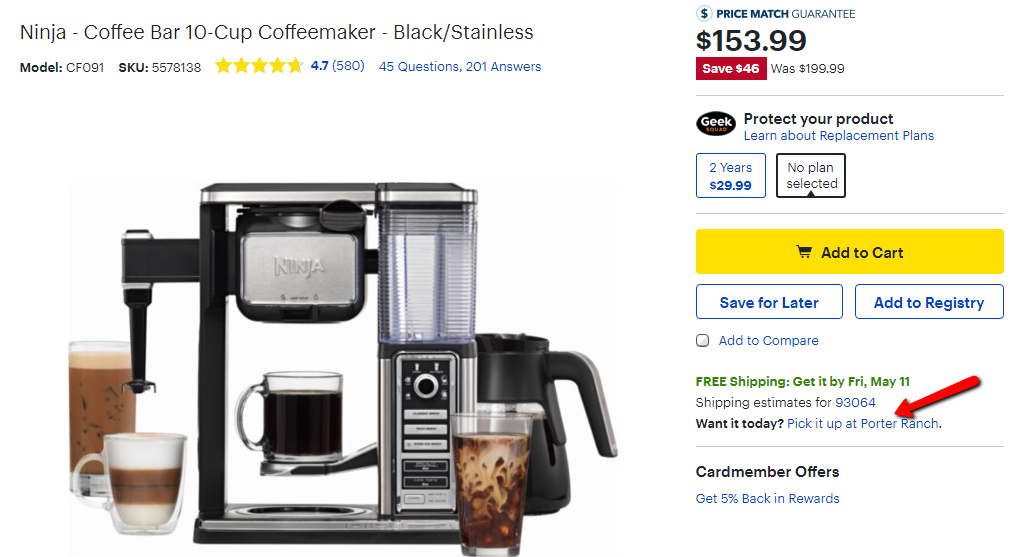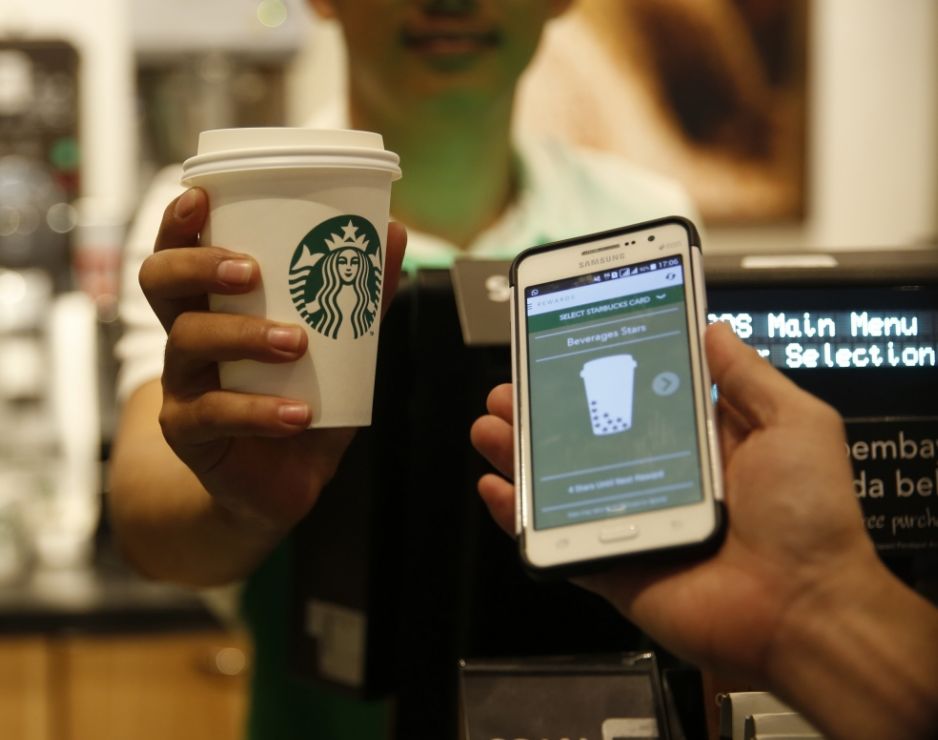eCommerce Transformation Can Sustain and Scale Your Business
According to Statista, global eCommerce sales are expected to increase 246% by 2021, from 1.3 trillion in 2014 to 4.5 trillion in 2021. 2021 is only 3 years away and this momentum is not showing any signs of slowing down.
We’re living in a very exciting time where technology and innovation are pushing boundaries and challenge status quo online businesses.
Global and domestic companies have to constantly rethink their online business strategies – from eCommerce platform and CRM to marketing campaigns and customer journeys. All components that affect the customer and company sales is affected by e-commerce transformation strategy that is sustainable and scalable.
A study found that 56% of in-store purchases are influenced by digital commerce in the form of search, social, video, audio, or the written-word.
Don’t believe me? 10 years ago, you couldn’t stay home in bed and order your the latest book on “Crushing It” by Gary Vaynerchunk. Not a chance.
You would need to drive to a bookstore to buy your copy of the book. What a hassle that was, compared to how we shop today.
With eCommerce’s rapid assimilation into consumerism, it isn’t enough to focus on traditional brick-and-mortar stores anymore. In fact, as businesses undergo e-commerce transformation, it’ll become evident that the shift to digital and the innovations that enable digital transactions will tip the scale of brands and businesses of all sizes.
In a news article FoxNews, 24 big retailers, many brands you are familiar with, are closing, if not closed.
Shoppers are turning rapidly to online retailers to find, see, compare, and buy. We’re living in a world where society demands AND expects convenience, speed, and great prices – 24/7/365.
The allure and psychological effects of completing an order with a few clicks is appealing – and tens of millions of consumers have voted. eCommerce is here to stay.
In a Forbes.com article:
“Current retail trends show that 51% of Americans prefer online shopping, with e-commerce growing 23% year-over-year. E-commerce is expected to change at an even faster rate as brands embrace the power of voice search and omni-platform/omni-device options. Voice assistants are already being used to make purchases by 40% of millennials, with that number expected to exceed 50% by 2020. This transformation of the digital retail landscape will only continue to grow as more consumers integrate digital devices into their shopping habits.“
To dive deeper we’ve chose 10 things we think will change how people buy from you with an eCommerce strategy.
- Customer Acquisition
- Inventory Breadth and Depth
- Real-Time Analytics and Customer Feedback
- Personal Recommendations
- Content Distribution and Syndication
- Targeted Advertising
- Same Day or Next-Day Delivery
- Cross-Device Engagement
- Building Customer Loyalty
- Research Online, Purchase In-Store
1. Acquiring New Customers through Online Acquisition Channels
Reaching new customers happens when businesses get someone to make a first purchase.
In traditional business models, this would require someone to walk into a store to buy something for the first time.
But there’s a problem with traditional in-store customers. There is insufficient indicators, a flaw to accurately track if they are first time customers or repeat customers.
Stores try to track customers with a voluntary email signup card, that’s pretty much it…
…the person on the other side of the cash register may or may not enter the customer information into the system.
But, most of the time they don’t. And if they do, it is prone to human error.
The new customer dilemma, if you will.
If your website is selling online, and you’re not using core channels like Google search and social networks to acquire new customers, you should.
You’re missing out on sales, period.
Online acquisition of new customers through advertising platforms like Google AdWords, Facebook Ads, and Instagram Ads can deliver amazing results and ROI with the right ads and audience segments.
Your ability to deliver the right message to the right shopper at the right time is one of the biggest advantages of online ads.
There’s no better time and opportunity to supercharge your new customer base.
We live in a world where most shopping activities are gravitating from retail stores to screens…desktop, mobile, or tablet.
Search engines and social networks have created the perfect trap for your business.
They have a captive audience, to the tune of hundreds of millions, who rely on these platforms for daily interaction, recommendations, news, and engagement.
It is surprising…
…many retail businesses still use print catalog as their primary medium.
Print catalogs is inefficient because:
- You cannot correct a misprint for an offer and redistribute to your millions of subscribers
- They aren’t scalable
- It only works for a short amount of time, and get thrown out into the recycle bin
- They don’t put a specific message in front of a specific audience because segmenting a print catalog is practically impossible
2. Your Entire Store Online Without Limits
According to Scrapehero, Amazon.com has over half a billion, or 562,383,292 products as of January 2018. Probably even more now that we’re half way through 2020.
You’d need a mega showroom to carry a fraction of that insane amount of products.
And even if you can afford one mega store, imagine the costs of rent or real estate if you had stores across the country. The calculus doesn’t add up.
To complement store presence, business augment their customers’ experience with e-commerce experience.
30 years ago, there was no internet, no google, no social networks, no smartphones. But there is no excuse for businesses today to not embrace the technology and scale with it. It’s an adopt and evolve, or die scenario.
A real challenge for retail stores is the limited space for each store.
So to properly stock up, buyers would have to analyze sales data, local trends and popular products to stock their stores.
Selling online requires its own fair share of operational logistics and planning.
But going online affords your e-commerce site to showcase the breadth and depth of your entire product catalog.
Several physical limitations are removed like floor space, shelving, inventory management of multiple stores, employees to work 9am – 9pm, lease agreements, etc.
The ability to update your offers, product variations, add new products, update images in real-time is the ultimate 1-to-many relationship you can create.
With a few clicks of your mouse (or programatically), your e-commerce site will have the latest products, updated content, hottest offers, and more. By now you should realize the benefits of pushing for e-commerce transformation in your business.
3. Real-time Analytics for Customer Feedback
10 years ago, if I asked you how your customers feel about your store, products, customer service, shopping experience, you would not have a lick of a clue.
There was no reliable feedback mechanism to create a functional relationship with customers. Additionally, the amount of data was limited due to restrictive technology and data storage space.
Retail stores measure customer feedback by using metrics like same store sales, weekly sales trends, and projections.
But we can do better.
Companies who operate e-commerce businesses MUST HAVE their analytics set up flawlessly, ensuring they can collect the data and use it to make more money.
A solid analytics set up empowers you to capture the most relevant data to analyze. E-Commerce transformation starts with having the right and most relevant data to make critical decisions.
This instantaneous feedback loop through analytics provides actionable insights that your team can act upon to drive growth.
I’m super excited that we’re living in a world where information and content reins supreme.
It’s common for businesses to get overwhelmed with what metrics to look at. As a result, data becomes stale — it doesn’t get extracted and used properly.
Levering your customer feedback and information is key to transforming your e-commerce business.
When you build customer personas, your customer data is the foundation of knowing what, when, how, and when during your persona development. Focusing efforts to improve your site user experience, website interface, and most importantly what to add and remove from the website.
E-commerce businesses need to jump on board and pay attention to customers’ feedback or risk rapid attrition in the coming years.
With a combination of website analytics to social media monitoring tools, the wealth of customer feedback about your business is 100X easier to capture now than ever before.
Here is a good list of social media listening tools for:
Some questions to ask yourself, then turn to analytics for answers are:
- Can the customer find what they want? If not, what can I do to help.
- Are return rates high for a certain product? What are you doing to capture the reasons.
- Are my customers talking about other brands? You need to know what your competitors are up to.
- What do they like about our products or services? This will inform and influence road maps.
- What else can we do better to meet our customers’ needs? This opens up a whole new opportunity to continuously improve your overall e-commerce strategy.
Like all relationships in life, you, the brand, needs to give value first. And you give value by listening then acting.
And that goes beyond the customer getting ABC product or XYZ service.
4. Personalizing the Shopping Experience
I was shopping for a wireless headset in Target a few weeks ago.
Anyone know knows me, know that I’ve been procrastinating to get one for months!
I finally decided it was time to upgrade from my crummy plugin headphones to a Bluetooth headsets — and I love it!
However, that wasn’t my first time in the Target headset aisle looking for the right equipment. It was the third time I went to Target just to continue perusing the aisle.
I was comparing LG Tone Ultra Premium to LG Tone Pro.
If you asked me how I would design my ultimate personal shopping experience.
It would look something like this.
During my third visit — out of nowhere — a flash of light blinded me, and when I regain my vision, I get immersed into this exaggerated (highly unrealistic, but to make a point) personalized LG in-store experience:
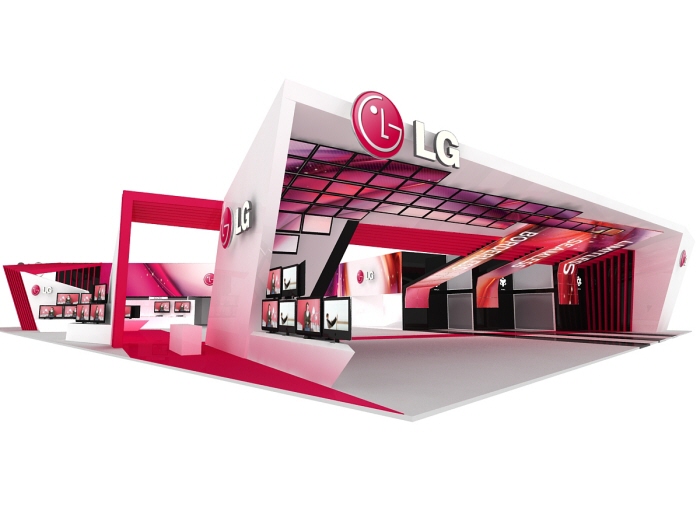
This is the level of store personalization is something we may NEVER get to experience in our generation. But it sure is a nice extreme illustration.
BUT with an e-commerce transformation strategy, your website and behavior you know about your customers is the ultimate playground personalization of products and services. What do I mean.
Personalizing the shopping experience goes beyond the website.
It’s a mindset that each customer is unique and deserves an experience tailored to their own parameters and space.
The four areas of e-commerce personalization that should be part of your transformation include, but not limited to:
- Website personalization. When your site’s content is tailored for each individual shopper – it’s like a concierge mindset. You create the most relevant experience based on “scent” and behavior demonstrated by the individual. This include offers, visuals, content – all dynamically generated to curate the perfect experience.
- Product recommendations. It gets boring if you recommend the same products to your visitors on every visit. Behavior-based product recommendations can increase items added to cart and conversion rates. Recommendations like best sellers, you might also like, up-selling, and cross-selling some are ways your business can get creative here.
- Social proof messaging. Social is the ultimate touch point in the customer journey. It’s the go-to for recommendations and reviews. Your e-commerce strategy should use social to augment context to the individual based on shopping signals. For example, showing on-page testimonials in a chat window about the the currently viewed product.
- Triggered emails. I am a huge fan of triggered emails. Triggered emails are automatic emails sent to your subscriber when a desired action is taken. They are already customers who want to hear from your business and are engaged. Your e-commerce transformation should include taking a deep dive into the current triggered email strategy and start integrating elements of personalization to build a deeper relationship.
Many businesses have dipped their toe into one of the four areas above.
But unless your business embrace these concepts and invest in integrating it to your e-commerce business, you are going to fall short while your competitors are racing towards e-commerce nirvana.
5. Creating Content Worth Sharing
Companies that understand the importance of content creation in the form of video, audio, images, or written-word is already ahead of the curve.
These companies are using content to engage and build awareness of their products, services, and values.
Understanding the e-commerce customer funnel is essential in the development of a strong content strategy.
It still amazes me that many e-commerce businesses today are still lacking in content.
But great curated content takes time. A perfect example is Red Bull’s YouTube channel. Red Bull committed to their video strategy since 2008 and have achieve one of the greatest YouTube channel in history.
They have crossed 7 million YouTube subscribers. But it is unlikely that all 7 million people drink Red Bull drinks.
The point of great videos is not to convince you to drink Red Bull.
With an almost-altruistic mindset, Red Bull’s video content fosters a community, increase social awareness, and share values the company believes in – but of course it also doesn’t hurt that their videos KICK ASS and everyone knows what Red Bull is by now.
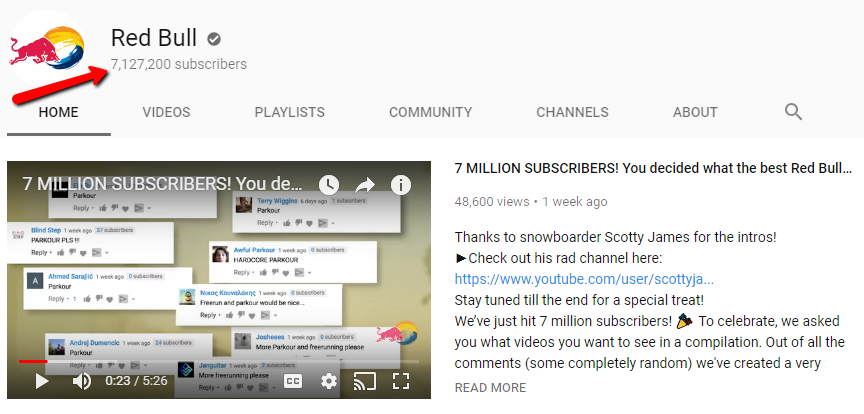
A consistent output of great content does three things:
- First, it is the glue that keeps you connected to your customers
- Second, it introduces your brand to new customers who may someday consider buying from you
- Third, it helps you stand out in a noisy marketplace
In any of the three stages of a customer funnel – awareness, consideration, and conversion – you will find content weave its way across customer touch points.
There is really no secret code to crack for great content. Just a lot of research, planing and a healthy dose of creativity.
6. Only The Customer Matter
In 2018 and beyond, understanding your customers at an individual level becomes exciting.
Similar to personalization, I see the importance to hone in on your customer revolving around their omni-channel experience.
The days of template-driven web pages are over. There’s no more tolerance for slow website experience. It’s now about precision, speed, and 1:1 curation.
When my grandparents went shopping during their era, it was a buy or leave mentality.
Store salespeople couldn’t really do much. But nothing changed much after 30+ years of retail. Stores operations are stuck in the past on how they approach customer relationships.
Last week I walked into a Big 5 Sporting Goods store to look for hiking boots for my sons. We couldn’t find the right sizes.
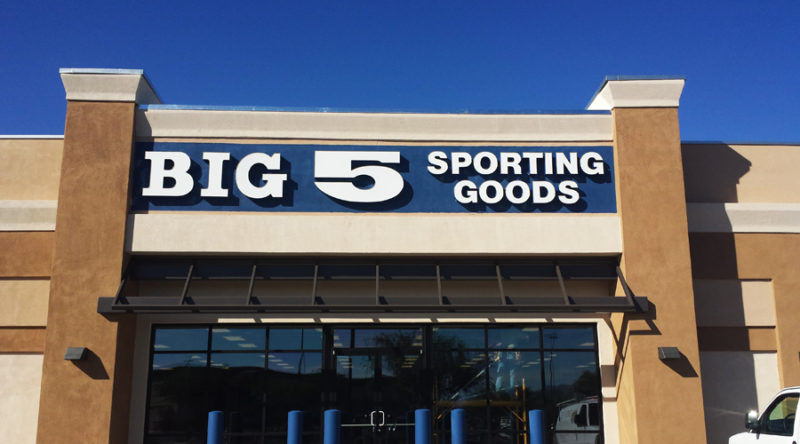
There is nothing much the store clerk could have done besides calling up another location right? Wrong! That’s the retail mentality.
Here’s one thing she could have done (or been trained to do):
- They could have offered to look up the size on their e-commerce site. Then offer next day delivery! That would have been a pleasant shopping experience. The power of their e-commerce was right in front of them yet they fail to use it to connect with a customer.
Hone in on your customer and create the most enjoyable and euphoric shopping experience.
This is important for businesses of all sizes, but when you are a business with hundreds of retail stores, achieving this customer-centric mindset excellence through corporate training is challenging.
You need to maximize your e-commerce platform and integrated tools to augment your customer engagement.
E-commerce is not always about transacting on the internet or engaging with social content. I think that’s a myopic view in our industry today.
E-commerce must be fused in to your business’ ecosystem. It is often siloed – and that’s where I have seen many companies struggle.
Stores and e-commerce often run separately with little to no cross communication – the lack of knowledge sharing creates friction for businesses trying to figure e-commerce out.
That’s a huge opportunity to bridge the cap. The customer’s needs doesn’t change, but their behavior evolves and therefore you must.
With the right tracking mechanisms in place, you’re already capturing valuable customer information and behavior.
Use this data, as long as your e-commerce practice is respecting user privacy, to create a laser-focused journey – one that feels so natural the customer doesn’t even realize they are being “funneled” down a certain path, but gladly follows because it feels right.
When you start to hone in on your customer, you will realize the crux your e-commerce transformation, what every customer want is:
- Excellent customer service (learn from Zappos, ignore Tony’s hairdo)
- Competitive prices (good prices is no longer enough)
- Fast and free delivery (you can thank Amazon for this)
- Better and more options
- Concierge-like personalization
Your marketing tactics is where your need to get creative. A well structure marketing campaign will hit a home run and everyone smiles if you put the puzzle pieces together.
7. Delivery Instant Gratification
We can all send Jeff Bezos holiday thank you cards for this one. It seems like he is opening up more shipping centers near major cities than Subway is opening new shops these days.
The promise of same-day delivery to Amazon Prime customers set the golden standard; and Amazon apart from its competitors.
Amazon is forcing the arm of other tech giants like Google to play in the same arena.
TechCrunch also reported that Google will launch same-day delivery service, “Google Shopping Express” to compete with Amazon.
Google Shopping Express will offer same-day delivery from retail stores like Walmart and Target. Go Jeff!
I am elated to see these behemoths go head-to-head to drive innovation by leaps and bounds in e-commerce. The upside, customers ends up winning.
But what does that mean to your e-commerce business
As these big-name e-commerce players afford to offer same-day delivery, they’ll win over the majority of consumers who want things, fast.
First it was free shipping becoming table stakes. With innovation and advanced logistic planning, we now have next-day, same-day, and as fast as 2-hour delivery.
As it becomes the norm, people will become comfortable paying extra for the fastest delivery.
Traditionally, consumers would balk at the thought of paying for shipping. But customers’ appetite for instant gratification must be furnished, and e-commerce business are more than happy to meet the demand.
I’m no fortune-teller, but if you don’t offer your customers the option of same-day or next-day delivery, they’ll turn to competitors who will.
Your e-commerce business needs a strategy developed around shipping. Are you ready to offer same-day delivery, if not, what about next-day delivery?
What if something is out of stock in the retail store, can your business pull from your e-commerce inventory to fulfill the order in the store?
Free Shipping is no longer a discussion at the executive table. It’s an expectation that must be met with the highest standards.
8. Research Online, Get It In Store
Shoppers researching online and completing their purchases in store or picking up in store is something to consider.
Businesses with retail stores and e-commerce sites should figure this out to remain competitive.
Omichannel strategy is getting more prevalent as mobile device usage increases.
There’s access to information whenever we want it, wherever we are, and whatever we’re looking for.
Accessibility on-the-go is at an all time high.
In the past, I had to either do my research at the office or wait till I got home on my desktop. before the smartphone (that little rectangular device in your pocket) took over my life.
A good example is BestBuy.com and Walmart.com.
For example, you can browse their e-commerce site (mobile version included), read product reviews, product descriptions, compare prices.
Additionally, you can pick the “Save for Later” option and go back later to complete your purchase or do more research.
Let’s say I’m at my lunch break and I decided to order a new coffee machine because, well, I deserve one!
I visit BestBuy.com and start looking up coffee machines.
The Ninja Coffee Bar 10-Cup Coffeemaker was a machine I’ve had my eye on and it has a 4.7 star reviews.
I read through some of the 45 questions and 201 answers. Everything checks out. I’m impressed.
And I’d save $46! What a deal.
So, at this time, Best Buy has purchase options.
I could order it and get it delivered by the estimated date, or pay and pick it up at local Best Buy store after work!
So while next-day delivery is appealing, the fact that I can research online, place my order then pick it up hours later on my way home is brilliant!
Obviously, I’m are such a coffee-aficionado, so this option works for me.
If your online ads are only focused on driving traffic and sales to your e-commerce site, you could be missing a huge opportunity to reach new customers.
How you build your campaigns, ads and landing pages should have one thing in mind – your customer’s journey.
Today, that journey is no longer binary. Customers don’t just buy on the first click, as often as they used to anymore. Their journey is multi-faceted and occasionally unpredictable, from discovery to purchase.
While it can be tricky to measure how online traffic translate to offline sales, it’s a key component of e-commerce transformation.
Your e-commerce business must figure out which ads and site pages led consumers to in-store action.
A few tactics worth testing for your business include, but not limited to:
- Unique online promo code to be used in-store only
- Click-to-call tracking
- Geo-targeting and location-based ads
- Landing pages that drive in-store offers
Invaluable information is at stake here.
A 360-degree campaign gives you meaningful information about your customer.
Obtain valuable and meaningful data you can act upon. Merging online and offline customer actions will get the advantage your business needs to stay ahead.
9. Engage Across Devices, But Have a Mobile First Mindset
Starbucks created a Mobile Order and Pay app in 2015. By 2017, 30% of all Starbucks orders were paid via mobile.
Let’s face it, mobile has taken over our lives. Many of us would give up all our money and jewelry to a robber than have our smartphones taken away.
We would fight to the death to defend our smartphones.
Over 60% of e-commerce activities are done on mobile. Whether it’s researching a product or making a purchase.
There are still many e-commerce businesses that are still lagging in mobile-responsiveness, much less native. Smartphones are here to stay. There is no denying that.
10-years ago, I didn’t think my life would revolve around mobile notifications.
Each time my smartphone buzz, I feel compelled to check.
Every 10 minutes, I check what the latest tweet or post in my news feed.
We’ve become dependent on smartphones to keep us connected to our friends, co-workers, and the world — it’s just insane.
Now, imagine if you could complete a transaction on your smartphone without using your credit card.
What if your fingerprint is connected to your bank account and becomes your method of payment.
Sounds too futuristic? A start up in Singapore is already playing with the idea of paying with your fingerprint.
Focus on mobile functions and features that enhance human lives.
The capabilities of mobile applications is still largely untapped and what we’re doing today with apps is just the tip of the iceberg.
Investing in mobile goes beyond building a mobile-version of your e-commerce site.
It means figuring out how to consistently engage and create value for your customers wherever they are.
Your customers are no longer tied to a desk. They are mobile and on-the-go. If you’re not offering a solid mobile experience, your customers will just shop somewhere else that does. It’s that simple.
If your business runs an e-commerce site and retail stores across the country, you need a mobile strategy to stay in the game. A few interesting ideas I hope to see developed more:
- Using voice search to do an online query and then place the product on hold at the closest retail store for the customer
- I call this the Super Self Checkout. A mobile pay app that allow you to pick up what you buy, scan it, and make the payment automatically, without the need of checkout registers (I believe Amazon is testing this)
- Reviews Done For You (RDFY). Scan a product you want reviews on and the app auto populates reviews from your social network, expert reviews, and user reviews. If there’s an app like this out there today, I would love to have it – it’ll literally save me hours!
Below is a fun 3+ min video of what’s in store for e-commerce transformation
10. Build Loyal Customers
I hope by now, there are already a few eCommerce tips in this article that has sparked some ideas.
I feel very strongly that customer loyalty is the core factor for growth and sustainability of any business.
Needless to say, there’s not a single company that would disagree with the importance of having loyal customers buy and buy and buy again from you.
Prioritizing your customer’s needs is vital even though customer life-cycle differ between types of services or products. No argument here.
Loyal customers help sustain and fuel your business. their conversations of your products in social networks can fuel organic growth or create a PR nightmare.
In our grandparents generation, if grandpa didn’t like a product, there is nothing he could do about it, maybe tell a friend or two down the street.
Consequently, the brand would never hear or know to care about his complaint.
This shift is insane. In our world today, if you didn’t like a product, in a split-second, you would post comments on social networks and unleash your hashtag fury on the brand. Feedback is instantaneous.
And brands can no longer hide behind the veil of information-barriers. Vulnerability and transparency at its apex.
Meltwater has a good list of major brands that suffered social nightmares in 2017…enjoy.
If you want your e-commerce transformation to come full circle, make sure in everything you do, your customers come first.
- Want to make a better website? Make sure it enhances your customer’s journey, not your own.
- Want to build a rewards program? Talk to Annex Cloud, a leader in e-commerce loyalty software. Make sure it truly benefits the customers.
- Want to create a content strategy? Add value to your customers’ journey. Your content must entertain, empathize, and educate.
- Improving your mobile app? Make sure it doesn’t crash 🙂
There are countless other ways you build loyalty with customers. A strategy and tactic that works for a company like Starbucks may not necessarily work for you.
The crux of building loyalty among customers is your recognition, acknowledgement, and consideration of your customers’ needs. All you need to do is fulfill them.
Summing It Up
E-commerce transformation is a process that involves multi-phases and a lot of learning along the way.
As a result, don’t feel that you have to do everything at once; that’s probably the worse idea.
Focus on your customer and use their satisfaction as your north star metric.
I hope this article sparks conversations inside just one company.
Extras:
Other areas of e-commerce transformation that are hot topics in our era:
- AI
- Automation and Chatbots
- VR
- Voice Search – Alexa and Google Home
- Subscription Boxes
We’ll talk about this some other time.
Hope this helps. And don’t hesitate to reach out with any questions.



